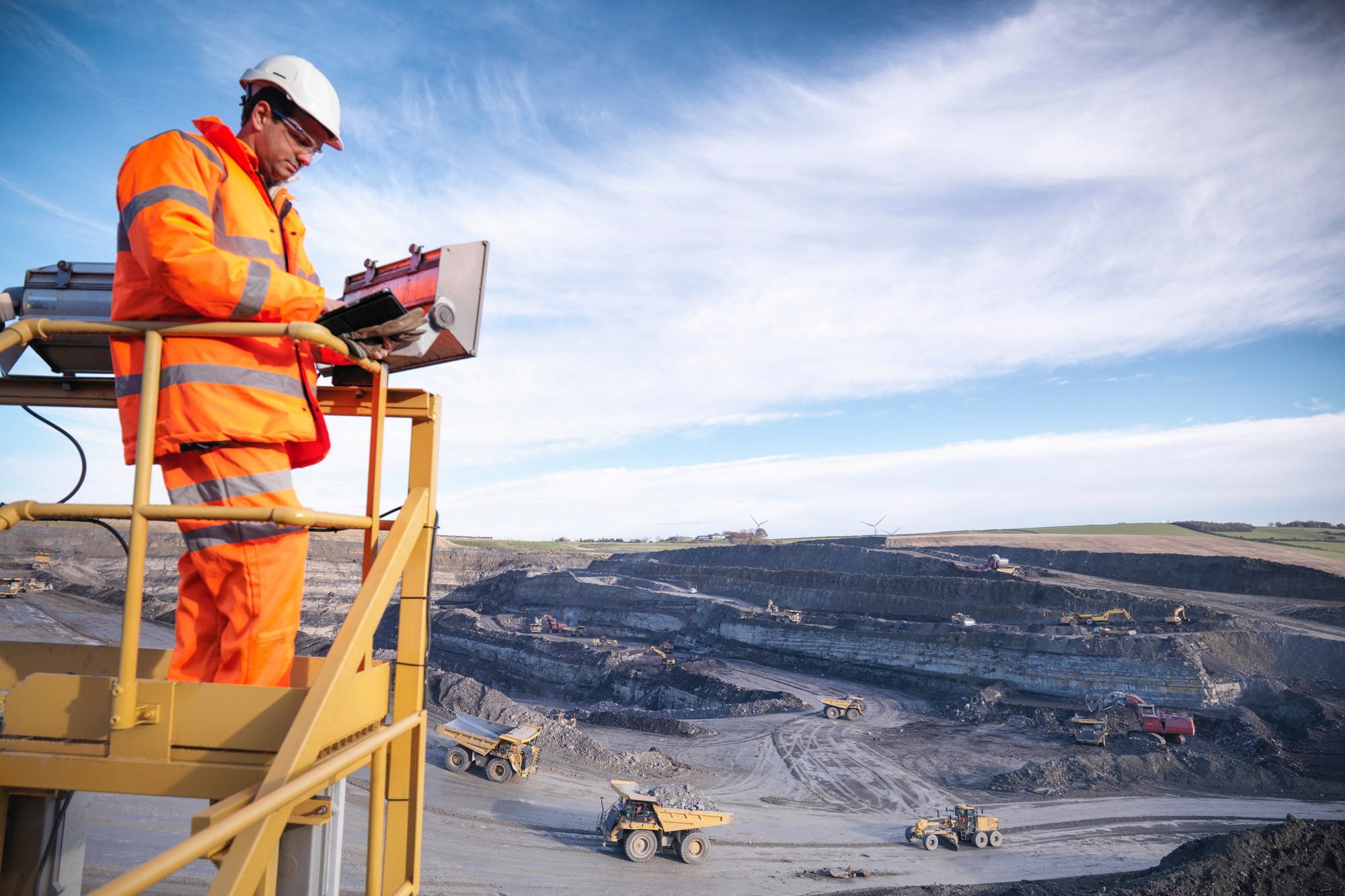Feature
Can ESG reporting software help miners clean up their act?
Environmental, social and governance (ESG) information is often a condition of financial investment for miners, and a new market of ESG reporting software is emerging. Heidi Vella speaks to Onyen’s Laurie Clark, asking: what benefits do these platforms really offer?

Ecologist at work on a mine. Credit: Image Source Trading via Shutterstock.
Rigorous ESG reporting, such as on greenhouse gas emissions and stewardship of vital resources like water, has quickly become necessary to secure capital investment in the mining industry in recent years. Sustainability reporting, alongside financial statements, is expected to soon become mandatory too.
For example, from next year, EU and non-EU companies with activities in the bloc will be required to do this under the Corporate Sustainability Reporting Directive (CSRD). Some large companies are already required to do this in the UK, and experts are in agreement: it can only be a matter of time before other countries, such as the US and Canada, follow suit. While these are not mining specific directives, this shift shows that ESG reporting is set to no longer be an aspiration, something nice to have, but instead an imperative.
“Companies should treat ESG reporting like compliance and risk management, because that’s what investors are now doing,” says Laurie Clark, founder and director of Onyen.
Onyen is a software-as-a-service cloud-based system, founded in 2020, that incorporates AI and machine learning add-ons to support the extractives industry in meeting its ESG reporting requirements. This is not Clark’s first company, but her sixth. She, and the core team behind Onyen, are former traders and brokers who previously built and then sold Data File Software that went on to become Broadridge, one of the largest securities settlement and clearing systems in the world.

Laurie Clark, founder and director, Onyen.
The idea for the business, Clark says, came after a close friend and CEO of a gold mining exploration company told her it was going to cost around $150,000 for their company to do an ESG report. Clark says she thought this price was “nuts”.
“My research showed that the mining industry was going through a metamorphosis, a shift through regulatory policy in the same way the capital markets in Canada had gone through a shift in the 1990s and early 2000s to more stringent regulations that resulted in either consolidation or liquidation in the market,” explains Clark.
The pitch, therefore, was to make ESG compliance easier and more affordable for junior miners, so they can better access capital and in turn be more responsible miners.
Simplifying ESG reporting online
Possessing a history of environmental disasters, social mismanagement, corruption and human rights violations, mining is one of the least trusted industries when it comes to ESG. The industry’s poor reputation and high ESG-related risk makes people “skittish”, says Peter Bryant, an executive business strategist at consultancy Clareo. This, he says, is why the sector is currently facing a drought in securing capital for project finance and equity.
“Capital generally stays away from mining, which is kind of a dichotomy because for the energy transition we need more capital in the industry than ever before,” he says, referring to comments made by BHP CEO Mike Henry speaking at the IEA Critical Minerals and Clean Energy Summit in Paris in September. There, Henry noted that the copper industry needs $386bn of “growth capital” over the next seven years, but only has around $40bn-$50bn today.
The copper industry needs $386bn of “growth capital” over the next seven years, but only has around $40bn-$50bn today.
The industry must clean up its reputation and transparency, and thorough ESG reporting is one place to start. Yet complying with the vast plethora of mining standards available, which are not connected to public reporting requirements, is complex, costly and time-consuming, especially for smaller mining companies that lack liquid resources.
This is where ESG compliance software professes to help. As an example, Onyen costs around $7,500 for one report and is used by miners such as Sherritt International, American Lithium, and SilverCrest Metals. It claims to simplify the process by incorporating only the 32 most globally-recognised standards, cross-mapped so a user can upload one piece of data and have it applied to all relevant standards. The data can be manually input, scraped from uploaded files or input from another program, via an API.
Integrity, transparency, and a matter of trust in mining
In the case of Onyen, entered data will create two different reports: a data-heavy machine-readable scorecard and another affectionally called the “pretty report”, because it has pictures, prose and looks more like an annual report.
“[The pretty report] is not what the investment community wants; if you only do the pretty report, the investment community thinks it’s greenwashing, that you can't prove the numbers,” she says. “Investors want to do their own number crunching, and if you’re giving them nothing to crunch, they’ll score you down, which in turn drives up the price of capital.”
To give companies an indication of what their numbers will mean to the investment community, the Onyen platform comprises a predictive scoring model that rates data via a traffic light system. But Clark asserts that the system is designed to keep companies honest by stamping every change made with the name of the user, time and date. Even if a user hoovers over a data point for a prolonged period, it is recorded in the system.
If the company is self-reporting, my audit brain just says well that is pointless, the mining industry is not trusted.
“You are not going to change the numbers, but you are going to put in an action plan to address it – it provides a reference point that indicates you have a gap and that you have to attend to it,” explains Clark.
Bryant, who has also worked for many years in software engineering, says that while self-reporting and easier-to-use are good, he offers caution. “If the company is self-reporting, my audit brain just says well that is pointless, the mining industry is not trusted. That's a huge complication. You can throw as much software as you'd like, but if you have a trust deficit, that is a problem,” he says.
Clark explains that her system tries to address these concerns by aggregating data, being fully auditable and by providing different permissions and capabilities within it for users to view and validate the data to foster accountability, such as the data in putter, a reviewer and approver.
However, the most likely best solution, says Bryant, is an independent, trusted audit industry springing up around ESG reporting to externally verify that data going into the system stays honest.
“It’s not until this has been established that you can really compare and contrast companies, and know, are they a good actor or a bad actor?” he adds.
Bringing AI advances to ESG reporting
Onyen will release a new tool in early 2024 that Clark says will make calculating indirect supply chain emissions, known as Scope 3 emissions, much easier and more transparent. The company has partnered with two Canadian universities – which she will not name – to build it.
“What I can say is it will be very specific; the customer will be able to turn that module in the system to their vendors to input the information as though it is their Scope 1 and Scope 2 emissions. That's the beauty of a transactional system,” explains Clark.
Beyond reporting, other capabilities for long-term mine management in relation to ESG are emerging. Onyen recently launched an AI capability, called Onyen H20, that uses satellite data and predictive AI models to estimate how much water is in the soil of a project today, and how this will change over the lifetime of the mine in different global warming scenarios.
“This information is imperative to our customers, it can make or break a mine,” she says. “If I can see how that mine will be impacted, I can then take mitigating steps. When you have information at your fingertips, it’s powerful.”
What is ESG reporting all for?
Bryant believes any software that can help with simulation, so industry can understand how to minimise its on the ground impact, is “obviously fantastic”. He adds that it is not emissions that are the mining industry’s biggest problem, but instead social outreach and issues related to water use and dust – essentially, issues that affect communities.
The industry still has a mountain to climb in how it manages ESG risks, particularly for “S” and “G”; the more challenging aspects of social and governance ethics. Arguably, the sector doesn’t take it seriously enough because neither do the markets, says Bryant.
“At the moment, I don’t think public markets care enough about ESG performance. Companies that have egregious violations of ESG – Rio Tinto [for its 2020 destruction of a 46,000-year-old Aboriginal heritage site] and BHP [for its 2015 tailings dam failure in Brazil, which killed 19] – have not been penalised in their stock market performance,” he says. “At some point, maybe the markets will reward good behaviour versus bad behaviour or average behaviour. But right now, I don't think there are examples of that.”